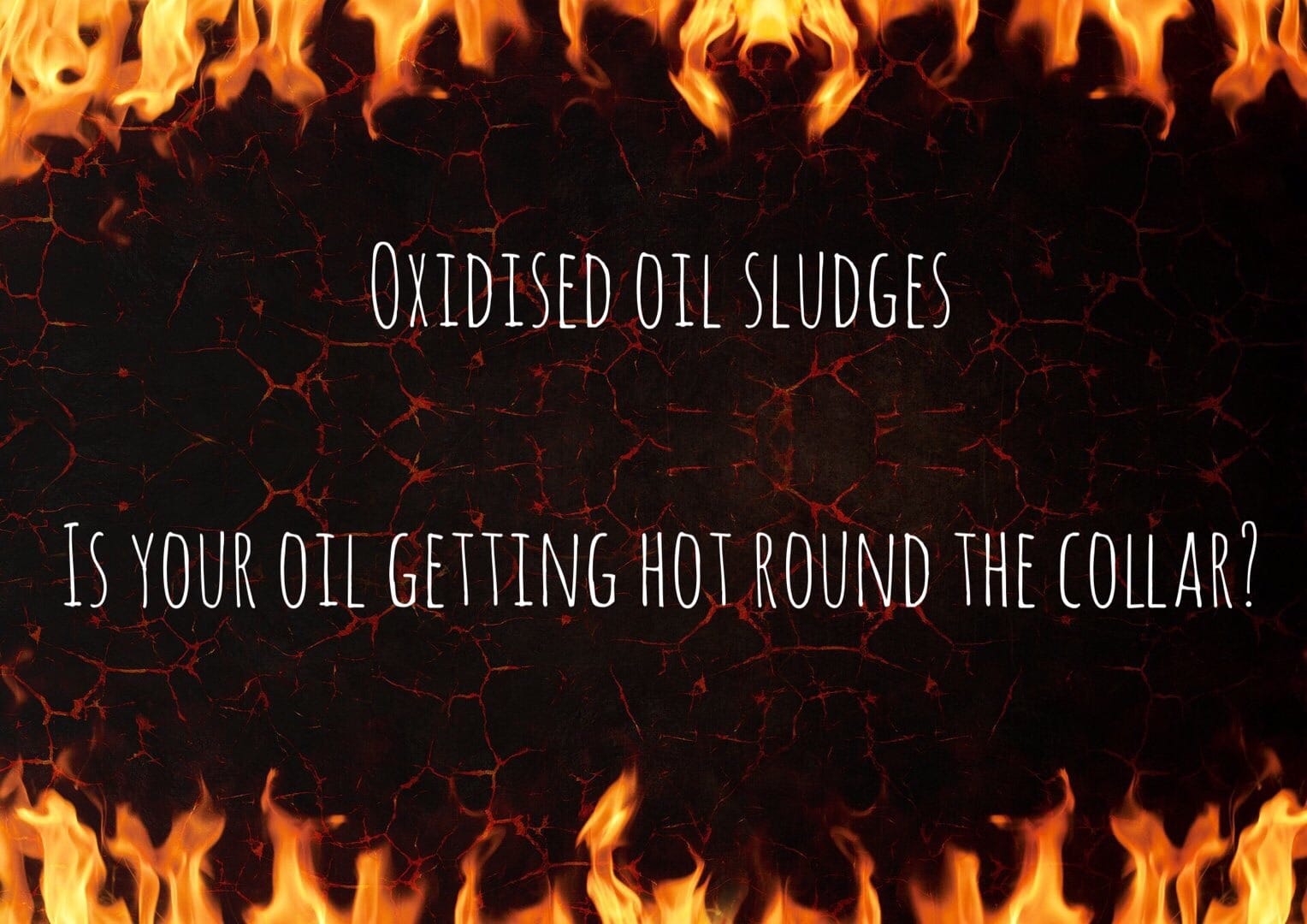An interesting question the other day on linkedin. Interestingly, from a competitor lab which I always take as a compliment. So I thought in the gesture of knowledge sharing for the greater good I thought I would write an article to explain.
The question was:
When we test engine oils for customers that are sludged we often comment the reason for this is poor combustion, but I am not quite sure as to how exactly the two are linked. Can you help? Your website is brilliant by the way – love it! I enjoy all your articles.
Answer:
Thank you for this question and glad you enjoy the website.
Let’s first define what a lubricant sludge is, which I would define it as the thickening of the lubricant to form very viscous deposits. There are three main reasons an engine oil would sludge – oxidation, evaporation and soot.
Let’s address oxidation first. Oxidation is when oxygen from air attacks the molecule of lubricant breaking bonds. The end product if completely oxidised would be carbon dioxide and water – ie complete combustion. The process usually is not complete and instead makes smaller reactive chemical species that attack other lubricant molecules causing them to polymerise. This polymerisation makes the molecules heavier and larger making them more difficult to slide past one another and causing resistance to flow or a higher viscosity called a sludge. This can also occur when a contaminant that is prone to oxidation enters the oil and used to be very common in the very old classic racing cars that ran on cooking oil that could be so viscous by the end of the race they could be almost solid when allowed to cool and hence why the oil was always dropped after each race. To reduce the effects of oxidation, this is the reason lubricants have anti-oxidants added to mop up reactive species called free radicals before they cause polymerisation. The most common anti oxidants are hindered phenols in engine oils, but there are various types used in all the different lubricants in R&O (rust and oxidation) additive packs. (See my FTIR and Ruler articles for more details).
Another reason the oil may thicken is through evaporation. A lubricant is not a single chemical and is instead a blend of different sizes and shapes of chemicals. If we were to take the boiling point it would not all be at one temperature and instead would have a boiling distribution curve where the different sizes separate off (much like the refinery separates the larger fractions in the first place). With new oils on initial startup the lighter ends of the oil volatilise off and slightly thicken the oil over time. I remember doing some research for an OEM where they wanted fuel dilution to 4 decimal places where we had to baseline the new oil vs the contaminated oil and this effect could be seen as the first batch of data we got all had negative fuel results which was entirely down to the lightest fractions of the oil volatilising off meaning less lighter fractions than the new oil baseline. This can also be a hot topic in that some companies may mix a thick and thin oil to achieve the viscosity required, but can lead to quick thickening of the oil and certain specifications now limit the degree to which this is allowed as it is widely frowned upon, although for certain applications is still a viable option for where regular oil changes occur and a low cost option is required.
The final option is soot. Soot is well dispersed in the oil owing to the excellent dispersant additives keeping it from agglomerating. However when you have exceptionally high levels such as when there is poor combustion through lack of air availability to burn e.g. turbocharger faults or blow-by from worn rings causing soot to enter the oil this can lead to the additives being overwhelmed. At very high levels the soot causes gelling at high temperatures where the oil goes solid leading usually to a catastrophic failure.
So yes poor combustion is one option for slushing through soot. However oxidation, contamination and evaporation are also additional reasons for sludging of the oil.


